topsignaljammer's blog
Wi-Fi has revolutionized the way we connect and communicate, but with its widespread adoption comes a concerning trend: the rise of WiFi blockers. This article explores the implications and concerns surrounding the increasing use of Wi-Fi blockers, shedding light on the potential consequences for individuals, businesses, and society as a whole.
Understanding Wi-Fi Blockers:
This section provides an overview of Wi-Fi blockers, explaining how these devices work and their primary purpose of disrupting or blocking Wi-Fi signals. It also touches upon the various types and capabilities of Wi-Fi blockers available in the market.
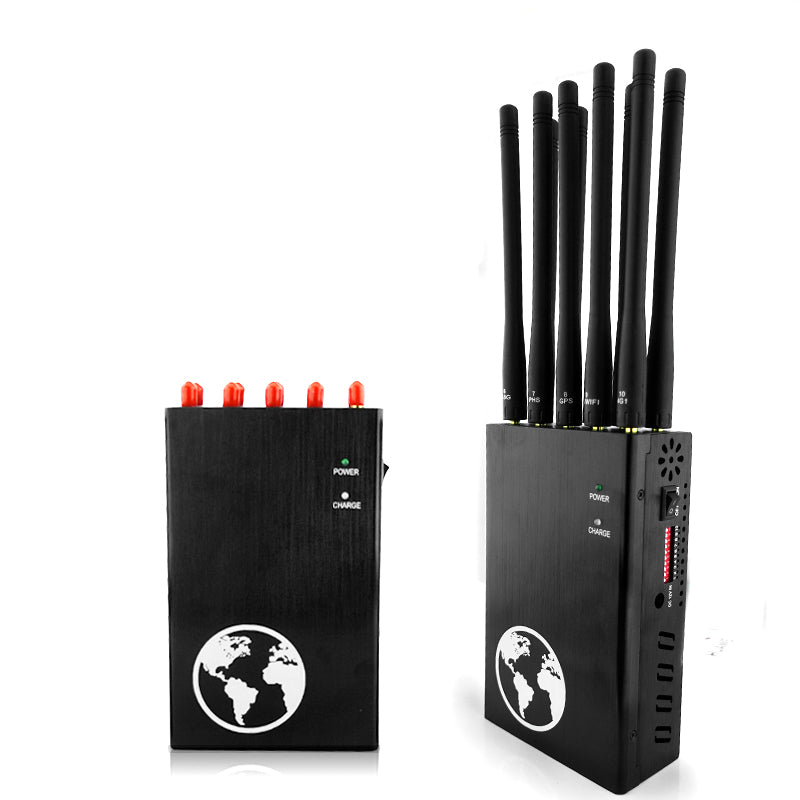
Privacy and Security Concerns:
One of the main implications of Wi-Fi blockers is the impact on privacy and security. This part examines the potential risks associated with Wi-Fi blockers, including unauthorized access to sensitive information, network vulnerabilities, and the potential for malicious activities.
Business Disruption:
Wi-Fi blockers can have detrimental effects on businesses and organizations that heavily rely on wireless networks. This section discusses the disruption caused by Wi-Fi blockers in various industries, such as hospitality, retail, and healthcare, and highlights the financial and operational implications.
Legal and Regulatory Landscape:
The use of Wi-Fi blockers raises legal and regulatory questions. This part explores the legal framework surrounding Wi-Fi blockers in different jurisdictions, including their legality, restrictions, and penalties. It also delves into the challenges of enforcing regulations and the need for consistent policies.
Ethical Considerations:
The ethical implications of Wi-Fi blockers are examined here, emphasizing the impact on the rights and freedoms of individuals. It discusses the ethical responsibility of individuals and organizations in using Wi-Fi blockers and the importance of considering the potential collateral damage.
Mitigation Strategies:
To address the concerns associated with Wi-Fi blockers, this section presents mitigation strategies for individuals and organizations. It covers measures such as network monitoring, encryption, signal strength optimization, and the use of intrusion detection systems.
Public Awareness and Education:
Raising public awareness about the risks and implications of Wi-Fi blockers is crucial. This part explores the role of education and awareness campaigns in promoting responsible Wi-Fi usage, highlighting the need for collaboration between stakeholders.
Future Outlook:
The article concludes by discussing the future outlook of Wi-Fi blockers and the importance of striking a balance between legitimate uses, security concerns, and regulatory frameworks. It emphasizes the need for ongoing research, technological advancements, and policy development to mitigate the risks associated with Wi-Fi blockers.
By understanding the implications and concerns surrounding the rise of signal blockers, individuals, businesses, and policymakers can make informed decisions to protect their networks, privacy, and security in an increasingly connected world.
Wi-Fi has revolutionized the way we connect and communicate, but with its widespread adoption comes a concerning trend: the rise of WiFi blockers. This article explores the implications and concerns surrounding the increasing use of Wi-Fi blockers, shedding light on the potential consequences for individuals, businesses, and society as a whole.
Understanding Wi-Fi Blockers:
This section provides an overview of Wi-Fi blockers, explaining how these devices work and their primary purpose of disrupting or blocking Wi-Fi signals. It also touches upon the various types and capabilities of Wi-Fi blockers available in the market.

Privacy and Security Concerns:
One of the main implications of Wi-Fi blockers is the impact on privacy and security. This part examines the potential risks associated with Wi-Fi blockers, including unauthorized access to sensitive information, network vulnerabilities, and the potential for malicious activities.
Business Disruption:
Wi-Fi blockers can have detrimental effects on businesses and organizations that heavily rely on wireless networks. This section discusses the disruption caused by Wi-Fi blockers in various industries, such as hospitality, retail, and healthcare, and highlights the financial and operational implications.
Legal and Regulatory Landscape:
The use of Wi-Fi blockers raises legal and regulatory questions. This part explores the legal framework surrounding Wi-Fi blockers in different jurisdictions, including their legality, restrictions, and penalties. It also delves into the challenges of enforcing regulations and the need for consistent policies.
Ethical Considerations:
The ethical implications of Wi-Fi blockers are examined here, emphasizing the impact on the rights and freedoms of individuals. It discusses the ethical responsibility of individuals and organizations in using Wi-Fi blockers and the importance of considering the potential collateral damage.
Mitigation Strategies:
To address the concerns associated with Wi-Fi blockers, this section presents mitigation strategies for individuals and organizations. It covers measures such as network monitoring, encryption, signal strength optimization, and the use of intrusion detection systems.
Public Awareness and Education:
Raising public awareness about the risks and implications of Wi-Fi blockers is crucial. This part explores the role of education and awareness campaigns in promoting responsible Wi-Fi usage, highlighting the need for collaboration between stakeholders.
Future Outlook:
The article concludes by discussing the future outlook of Wi-Fi blockers and the importance of striking a balance between legitimate uses, security concerns, and regulatory frameworks. It emphasizes the need for ongoing research, technological advancements, and policy development to mitigate the risks associated with Wi-Fi blockers.
By understanding the implications and concerns surrounding the rise of signal blockers, individuals, businesses, and policymakers can make informed decisions to protect their networks, privacy, and security in an increasingly connected world.
A portable signal jammer is a device that can block radio signals, which can effectively prevent the transmission and reception of radio signals. This kind of device is usually used to protect personal privacy and prevent information leakage, so it has been widely used in some specific fields.
Why use a portable signal jammer? What does it do? In what fields is it used?
The main function of the portable signal jammer is to prevent the transmission and reception of radio signals, thereby protecting personal privacy and preventing information leakage. It can be used in the following areas:
1. Military field: In military operations, portable jammers can prevent enemy monitoring and interference and protect military secrets.
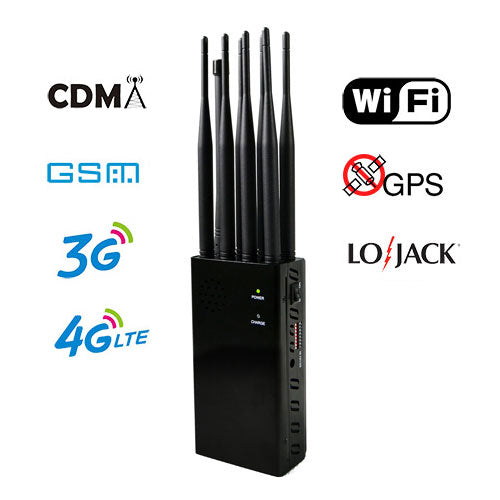
2. Business field: In business negotiations, portable jammers can prevent competitors from eavesdropping on business secrets and protect business interests.
3. Personal privacy field: In personal life, portable jammers can prevent others from eavesdropping on personal communications and location information, and protect personal privacy.
Portable signal jammers can help the above areas solve the following problems:
1. Protect confidential information: In the military and commercial fields, portable signal jammers can prevent confidential information from being stolen and leaked.
2. Protect personal privacy: In personal life, portable signal jammers for cell phone can prevent personal communication and location information from being stolen and leaked by others. How to choose a portable signal jammer and what issues should you pay attention to?
When choosing a portable signal jammer, you need to pay attention to the following issues:
1. Shielding range: Different models of signal jammers have different shielding ranges and need to be selected according to actual needs.
2. Signal type: Different models of signal jammers can block different types of signals and need to be selected according to actual needs.
3. Brand and quality: Choosing a well-known brand and high-quality portable signal jammer can guarantee the performance and service life of the product.
Effectively signal jammers various walkie-talkie signals, blocks (interferes with) the communication between the walkie-talkie and the receiver, and prevents various wireless stealth headsets (including anti-shielding and anti-detection headsets) grafted to the walkie-talkie system from working properly (strong noise or no sound) )
It only blocks the intercom signal and does not affect the normal operation of other electronic equipment.
Environmental protection, the amount of electromagnetic radiation has been strictly tested by the Environmental and Health Related Product Safety Research Institute of the Chinese Center for Disease Control and Prevention. The measured values of electromagnetic field intensity at each sampling point are far lower than the "Electromagnetic Radiation Protection Regulations" (GB8702-88) and are not harmful to the human body. Influence.
Low power consumption, it only blocks the intercom or receiving signals in the examination room, and does not interfere with the built-in switching power supply of intercom outside the examination room, ensuring the stability and accuracy of the signal.
The operation is simple, the antenna is installed correctly, and it operates automatically when it is turned on.
Technical indicators:
Effective shielding range: 20 meters (the emitting 5W walkie-talkie is 100 meters away from the examination room)
The smaller the power of the intercom and the further away from the examination room, the greater the shielding range.
Transmission frequency range: full frequency band.
Transmitting power: 3W.
Ambient temperature:-20-+55℃..
Relative humidity:35-85%
Power adapter: input AC160-240V50/60Hz.
Body size: 210mm*139mm*50mm.
Net weight: 1Kg.
Editing of applicable places for cell phone signal jammers.
1. Protection of communication signals of border operators.
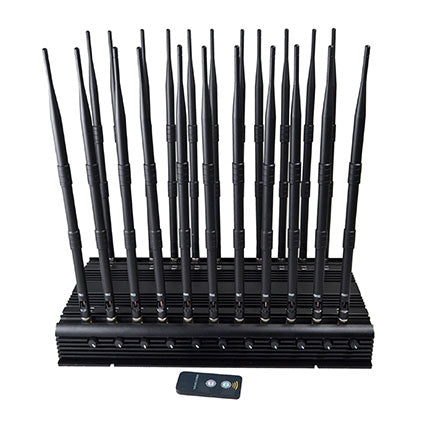
2. The combat needs of the troops.
3. Detention centers, reform-through-labor teams, and large and medium-sized prisons.
4. Large gathering place.
5. Safety precautions for leaders’ visits.
6. College entrance examination, adult college entrance examination, self-study examination and various colleges and universities.
7. Various large and medium-sized conference rooms, concert halls, and theaters for party and government agencies and enterprises.
8. Gas stations, oil depots, oil fields, gas stations and other flammable and explosive places.
With the popularity of mobile phones, the demand for mobile phone signal blocking in various conferences, exams, etc. has also increased significantly. Therefore, cell phone signal jammers naturally have a wide market. However, the vast majority of customers lack sufficient understanding of mobile phone signal jammers, and often choose high-power jammers one-sidedly for the sake of good results, causing many hidden dangers.
The principle of the mobile phone signal jammer is to emit interference signals through broadband and interfere with the uplink signal of the mobile phone to achieve the function of blocking the operation of the mobile phone. Therefore it is itself a signal emission source. Since it is a signal emission source, there is naturally radiation. The current transmitter power of the jammer ranges from 1W to 480W according to the needs of use. How strong is this transmit power? For comparison, the maximum transmit power of a GSM mobile phone is 2W, and the usual transmit power of a GSM macro base station is between 20W and 40W. The transmitting power of jammers generally used for exams and conferences is between 10W and 60W.
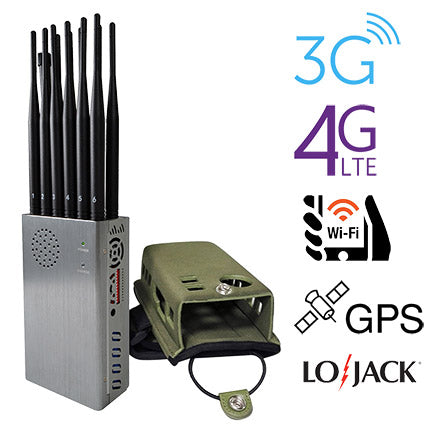
Normally, for general examinations and small meetings, choosing a mobile phone jammer with a transmission power of 2W-10W can achieve good results. However, according to our investigation of major schools and important conference locations, many places often pursue high-power jammers one-sidedly. For example: a school with more than 20 classrooms installs a jammer in each classroom, and selects The transmitting power is 30W, and after the exam, due to the lack of attention to use, it often happens that a small number of jammers are not turned off in time and continue to transmit for several weeks. Especially in a certain elementary school, after a certain exam, the signal blocker continued to be turned off for 2 weeks. It was not until we investigated the scene that we found that the jammer continued to be turned on on the side of the podium in a classroom full of primary school students! This really made us break into a cold sweat!
Therefore, I hereby strongly appeal to all units that need to use mobile phone signal jammers:
1. Do not blindly choose a high-power jammer. For a classroom, choosing a jammer with a transmit power of 2W is enough to achieve the shielding effect.
2. After completing use, be sure to turn off the shield in time to avoid continued radiation.
3. Be sure to choose a jammer produced by regular manufacturers. Jammers produced by informal manufacturers often deliberately increase the transmission power in order to achieve good shielding effect.
For the health of you and your family, please forward it to the public, thank you!
In what kind of environment can cell phone signal jammers be installed to achieve better results? Why do sometimes installed signal jammers not work, or have poor results? In fact, this boils down to the surrounding environment where you use the signal jammer. In terms of installation technology, the following factors must be considered when using signal jammers:
The comprehensive factors for indoor shielding include:
1. Consider the lateral application field space in the area that needs to be shielded;
2. The floor height of the shielding area calculated from the air or the vertical height perpendicular to the ground;
3. What needs to be considered is the blocking effect of house decoration materials and building materials themselves;
4. What needs to be considered is whether source signal enhancement measures or secondary amplification have been adopted indoors;
5. What needs to be considered is the proportion of indoor metals and non-metals;
6. It is necessary to know whether the transmitting frequency of wireless devices already existing in the room will cause same-frequency mutual interference;
7. It is necessary to consider the ability of existing indoor precision instruments and equipment to resist inter-frequency interference and the safe distance;
8. What needs to be considered is the partition status and orientation of the windows, doors and windows of the house;
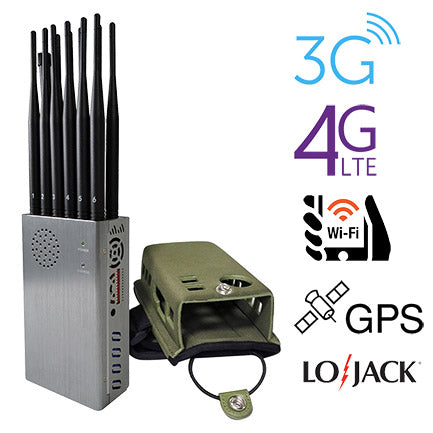
Comprehensive factors for outdoor shielding:
1. Before installing equipment in open spaces and non-open spaces, you should consider:
1. When the repeater emits strong electromagnetic wave signals horizontally and vertically, it will affect the shielding device;
2. The influence of the signal jammer for sale on the repeater signal during the interval time and the antenna selection can be affected by the antenna selection;
4. Separating walls and debris block the repeater from transmitting signals;
5. The blocking effect of stray objects and non-moving solid barriers on the radio wave of the shielder;
The cell phone signal jammer is a new type of information security product that uses specific electromagnetic signals to form a shielding network so that mobile phones cannot receive data from the base station in places that need protection, nor can they connect to the base station. Please note the following four points about signal shielding:
What should I do before installing a cell phone signal jammer?
1. Before installing the equipment, the antenna must be installed correctly according to the signs, and then connected to the power supply to prevent the machine from burning out.
2. Before installing the equipment, you should know the location of the base station and position the shielding cover toward the base station as much as possible.
3. When installing the equipment, pay attention to whether there are metal objects within 1 meter around the machine to prevent signal reflections from affecting the shielding effect.
4. Hearing aids should be installed in special environments such as gas stations and gas stations.
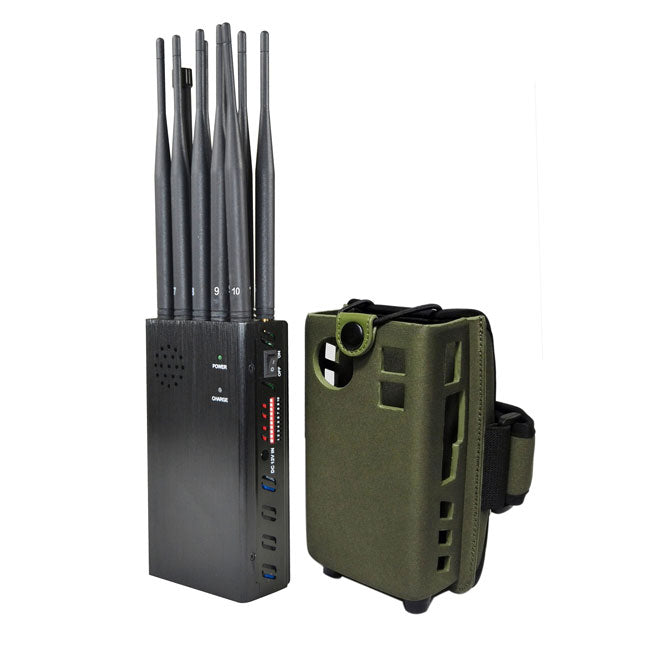
5. The height of the device is 1.8-2 meters. It can be placed directly on the table or wall, or it can be installed on the ceiling. The antenna is perpendicular to the ground, making it easy to use.
6. In indoor equipment, attention should be paid to whether the transmission frequency of wireless equipment will cause co-channel interference.
7. The anti-interference ability and safe distance of existing indoor precision instruments must be considered.
8. If there are signal-enhanced telecommunications machines indoors, it is not advisable to install shielding.
9. Fully understand the boundaries of the shielded area and the unshielded area.
Conduct a site visit after installing a cell phone signal jammer for sale.
1. Understanding the strength of the on-site signal is crucial for shielding equipment. Various signals have different signal strengths due to their different environments. The on-site signal strength can be designed to be shielded by the equipment.
2. If the device is not detected, you need to know the situation of the base stations around the device address, how far the visual distance is, which base stations (China Mobile, China Unicom, CDMA, 3G, 4G, 5G, etc.) and where the antenna direction of the base station is pointing. Generally, base stations in cities are mostly built on the roofs of high-rise buildings, while towers are often built in suburbs or villages.
3. If you have survey equipment, you only need to record the signal strength at various points indoors and outdoors.
There are all kinds of cell phone jammer and all kinds of machines on the market. Prices are also unstable. Maybe you've bought a cheap machine on a platform, but it actually didn't work. When buying mobile phone signal shielding, you can't care about the price, because buyers are useful. Otherwise, even if a useless machine is cheap, consumers will have no actual effect. When choosing mobile phone signal shielding, you know what aspects you need to use. You can tell our company's expert who specializes in selling mobile phone signal shielding and he will introduce it to you one by one. Recommend suitable styles to you so that you won’t step into any trap.
Mobile phone signal blocking can generally be divided into two categories.
1. Ordinary mobile phone signal blocking.
The technical characteristics of ordinary mobile phone signal shielding are mainly based on the shielding principle, using a large number of low-power or high-power equipment to fight, and staying in a simple technical solution.
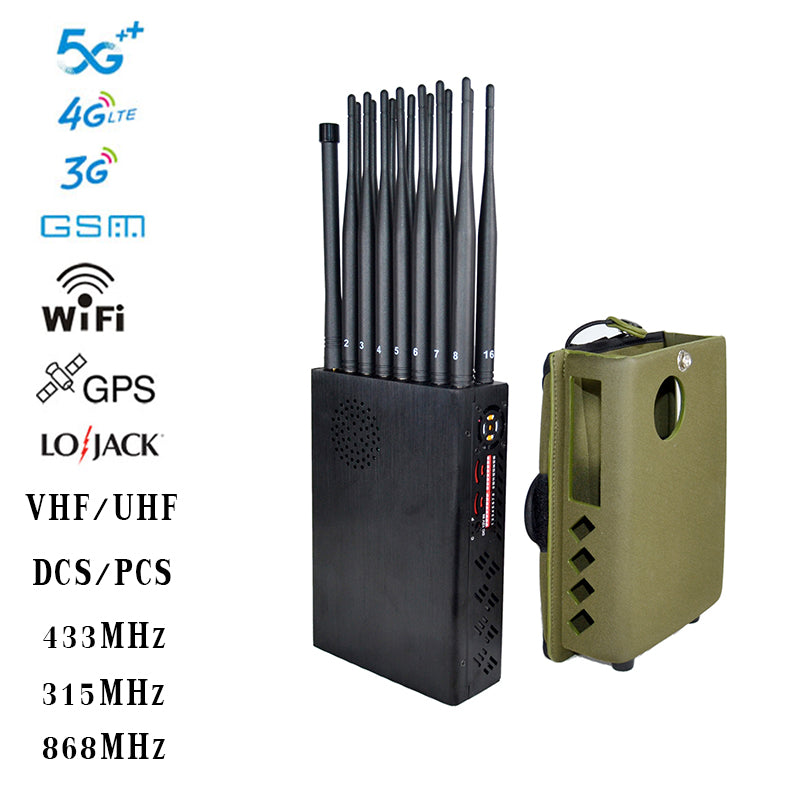
Ordinary mobile phone signal shields are nowhere near as expensive, quality, or efficient as high-quality mobile phone signal shields because their cost is there too. Especially temperature control. Ordinary mobile phone signal shielding basically does not have temperature control technology. Under poor heat dissipation conditions, ordinary mobile phone signal shielding will not automatically reduce the power to maintain, causing the machine to crash or spontaneously ignite. Therefore, ordinary mobile phone signal transmitters are really not recommended for everyone to use. Even the price is cheap. It is also not recommended for use by consumers.
2. High-quality mobile phone signal shielding.
The technical characteristics of high-quality mobile phone signal shielding are the use of strong signal digital point frequency hopping technology, which is 150 times lower than ordinary shielding technology; mainly outdoor shielding, which reduces indoor radiation power by hundreds of times; the use of multi-channel combining technology, all-round The frequency antenna replaces N frequency division antennas and is suitable for distributed antennas of wireless antennas; it uses distributed antenna technology to reasonably distribute shielding power and reduce antenna radiation by dozens of times; it uses 4G network and multi-channel combining technology to effectively reduce the number of antenna radiation ten times.
Ordinary mobile phone signal shields are nowhere near as expensive, quality, or efficient as high-quality signal jammers because their cost is there too. Especially temperature control. Ordinary mobile phone signal shielding basically does not have temperature control technology. Under poor heat dissipation conditions, ordinary mobile phone signal shielding will not automatically reduce the power to maintain, causing the machine to crash or spontaneously ignite. Therefore, ordinary mobile phone signal transmitters are really not recommended for everyone to use. Even the price is cheap. It is also not recommended for use by consumers.
High-quality mobile phone signal shielding is far superior in quality to ordinary mobile phone signal shielding. At the end of the day, the parts are installed using quality chips. And can work for a long time in harsh environments. The temperature control is also very stable. When the machine reaches a certain temperature, the Jinyuda mobile phone signal screen will turn on. It can automatically reduce the power to ensure that the machine will not burn out and at the same time ensure the operation of the machine. Moreover, high-quality mobile phone signal shielding uses gain antennas whether it is a built-in antenna or an external antenna. Coverage has also been greatly improved.
The cell phone signal jammer sends the signal to the same frequency device. If the shielding device is turned on, when the mobile phone signal is disabled, the interference part will be successful. Nowadays, there are more and more mobile phone users, so mobile phone signal jammers are more civilian than electronic devices. It is prohibited to use mobile phone signals to interfere with specific locations.
The mobile phone signal jammer is an instrument used to protect mobile phones from receiving signals. The mobile phone signal jammer plays signals with the same frequency to the GSM modem. If the mobile phone signal jammer is disabled, the interference will be successful.
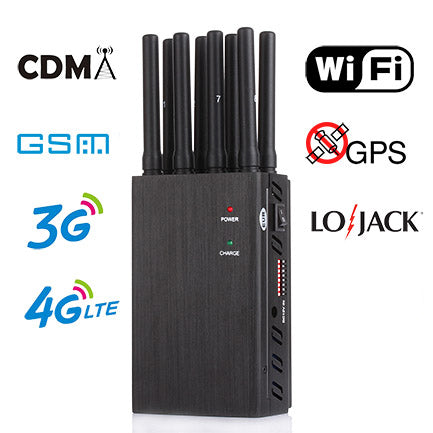
Cellular phones are full-duplex devices that can use two frequencies at the same time, one for speaking and one for listening, and process the signals simultaneously. If there is signal blocking, only one frequency can be blocked at a time. Because mobile phones can only access one of the frequencies, both frequencies are blocked because they think there is no service in this area.
The principle of disrupting cell phones is similar to how 3G interferes with other types of radio communications. In order to use a cell phone, signals are sent from the cell phone to the cell phone tower. There are several cell towers in a city, and cell phone users move from one tower to another as they move through an area.
A signal blocker emits the same radio frequency as a cell phone, interrupting communications between the cell phone and the base station in the tower by denying radio signals to users in the area covered by the jamming device, also known as a denial-of-service attack.
There are different types of mobile phone signal shielding currently on the market. Some devices can only block a single frequency, while others can block all types of networks at the same time. The latter can automatically switch to a model that looks for open signals from different networks. High-end devices can block at the same time. Full frequency, other devices can be adjusted to specific frequencies.
Simply put, they emit random static or noise over a wide frequency range that is so powerful that approaching devices cannot connect where it is supposed to. It's a bit like being next to the engine of a sports car, opening the hood, and trying to talk to someone on the phone. The localized noise becomes so strong that the device cannot make regular connections. They effectively prevent equipment from functioning properly to quickly cover a range of frequencies.
The carrier frequency of the electromagnetic interference signal is the same as the carrier frequency, so the receiver and amplifier solve (subtract) the interference signal and the interference signal at the receiving end at the same time.
When we are doing cell phone signal jammer coverage projects, customers often ask us what kind of environment can we assemble an effective mobile phone signal jammer. Why are mobile phone signal jammers used in some places ineffective, or the effect is relatively poor? What's the difference? In fact, this will ultimately be related to the surrounding environment, installation location, distance and quantity of the mobile phone signal jammer you use.
The mobile phone signal jammer manufacturer explains to you under what circumstances the effect of installing a mobile phone signal jammer is relatively poor?
1. There was no data analysis, plane survey, shielding coverage plan and other work in the early stage, resulting in no effect after blind installation, poor shielding effect, etc. (Before installing the shield, contact the professional customer service of Topsignaljammer Shield for consultation, and give Please refer to professional installation advice before purchasing a shield suitable for your own location).
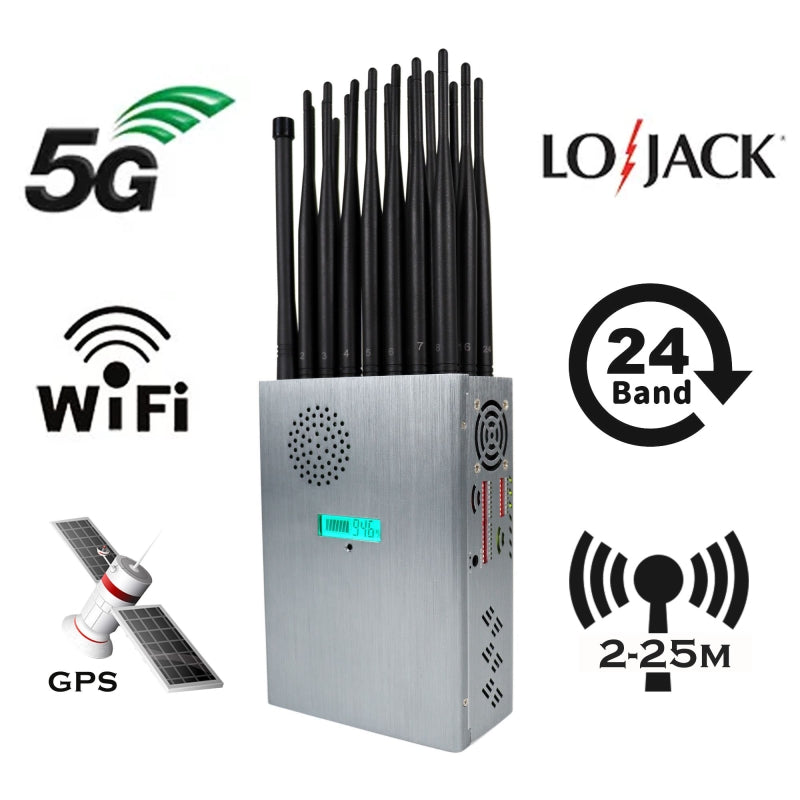
From the above information, we can understand that the operator we use is China Mobile. The frequency band is LTE2600MHZ and the signal strength of the environment is -86DB (the larger the data, the worse the information. It is generally recommended that the mobile phone signal jammer be installed at a position with a field strength above -86. Normal use) If the test data of the mobile card or China Unicom card you use is China Mobile or China Unicom data, the test signal strength needs to be tested separately by the four cards of China Mobile, China Unicom, China Telecom, Radio and Television to be more accurate. Screenshot the professional information to the manufacturer and give it based on data analysis. Professional installation solution suggestions
Do many manufacturers tell you that we all have four-network 2G.3G.4G.5G.WIFI signals fully shielded when leaving the factory? In fact, WiFi is transmitted in many segments. Without testing or checking the professional frequency band technical parameters given by the manufacturer, it cannot be completely shielded. WiFi is divided into three segments (2.4G+5.2G+5.8G) with a bandwidth of several hundred megabits. This is why many customers It is said that although there is WiFi signal shielding, you can still connect to WiFi and watch videos online normally when used on site. Unprofessional manufacturers will generally express that they cannot recommend a better one to you. Topsignaljammer only recommends the right ones and not the expensive ones. .
Many factories tell you that jammers have different shielding distances based on different signal strengths. We can use the software to check whether there are base stations near the place where you use the mobile phone signal jammer, how many base stations there are, etc.
Information, using mobile base stations or China Unicom base stations, telecommunications base stations, etc. Our signal jammer factory can make adjustments based on the information frequencies of nearby base stations to enhance the signal strength of the base stations so as to be effective.
Shielding can be customized one-on-one. Other factories use unified debugging and cannot change it, resulting in poor shielding effect and intermittent use of mobile phones.
2. The installation height does not meet the requirements, the installation position is improper (there are obstructions), and the use of partition walls causes signal obstruction.
3. Environmental factors. There is a base station 200-500 meters away from the location where the mobile phone signal jammer is installed, causing the shielding to fail.
